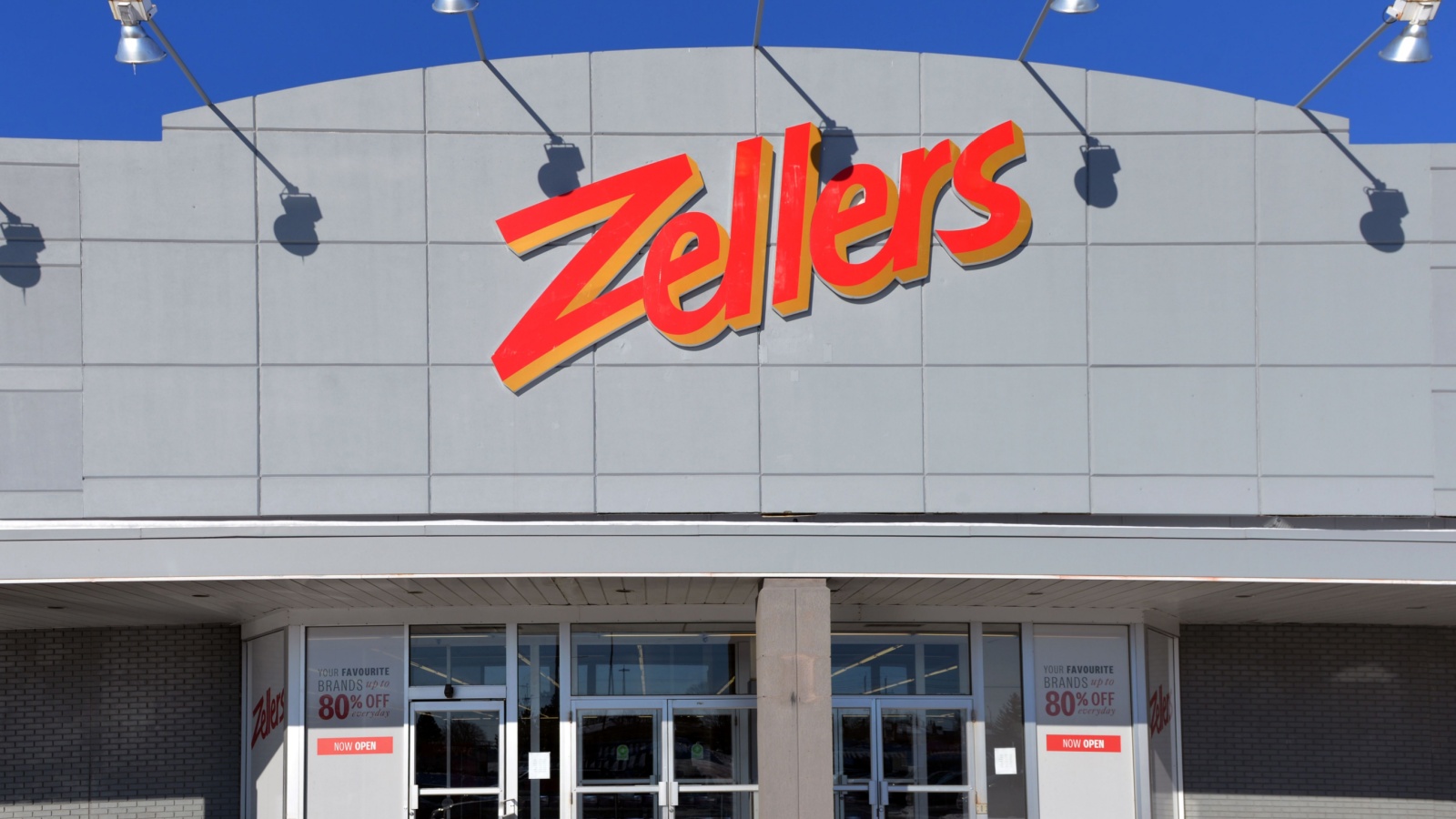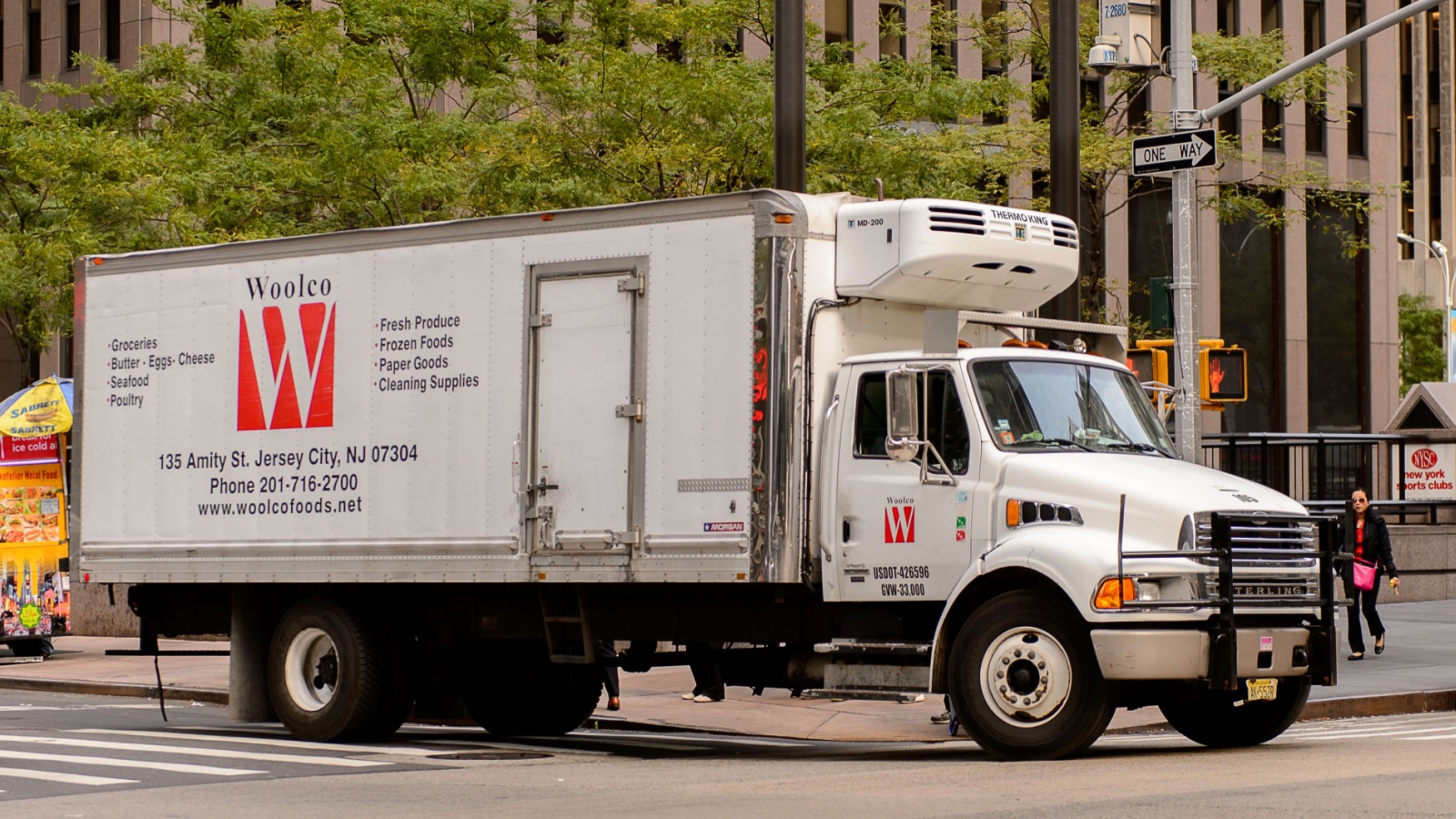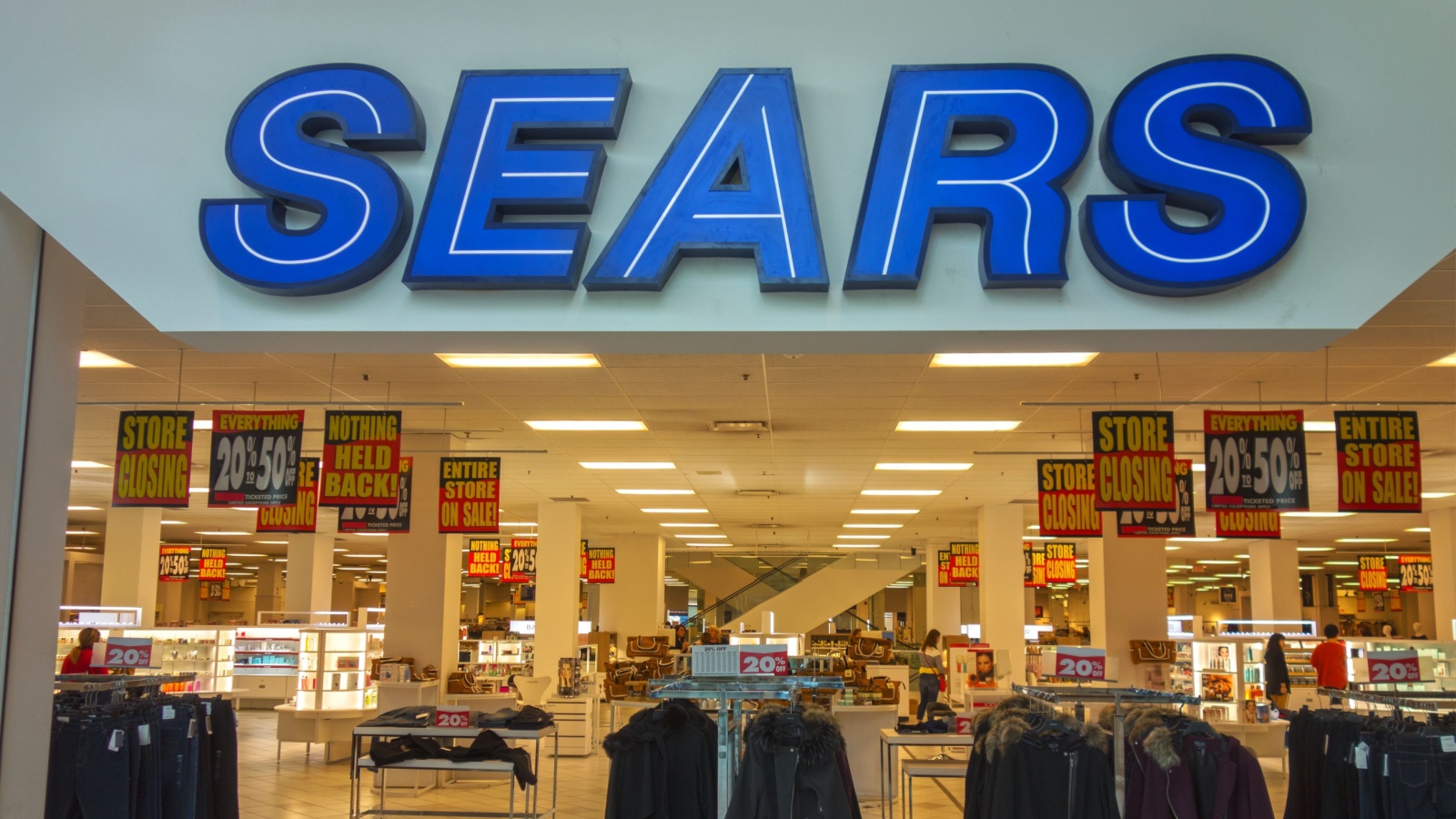There was a time when shopping in Canada meant walking into grand department stores filled with polished floors, perfume counters, and Christmas displays. These stores weren’t just retail spaces, they were cultural fixtures where people met, browsed, and dreamed. But as malls rose, online shopping took over, and foreign giants arrived, these once-mighty names faded from the map. Here are 21 Canadian department stores that don’t exist anymore.
Eaton’s

Founded in 1869, Eaton’s was the retail crown jewel of Canada, once employing tens of thousands across the country. Known for its mail-order catalogs and extravagant holiday windows, Eaton’s shaped consumer culture for generations. Its slogan, “Goods Satisfactory or Money Refunded,” built deep trust. However, by the 1990s, it couldn’t compete with Walmart’s low prices or Hudson’s Bay’s modernization. Its stores felt outdated, and family ownership struggled with modernization. Eaton’s declared bankruptcy in 1999, marking the end of an era. The brand’s fall wasn’t just a business failure; it was a national heartbreak for shoppers who grew up in its aisles.
Simpson’s

Simpson’s, founded in Toronto in 1858, was Eaton’s main rival for decades. Its department stores were synonymous with refined shopping and British-inspired elegance. The flagship location at Queen and Yonge was an architectural landmark and a destination in itself. When the Hudson’s Bay Company purchased Simpson’s in 1978, the two brands operated separately for years before merging. By the early 1990s, the Simpsons’ name disappeared entirely as stores rebranded to Hudson’s Bay. Its legacy lives on in how Canadians think of upscale retail, polished service, reliable quality, and a sense that shopping could feel like an event.
Zellers

For generations, Zellers was where families went for affordable everything, from kids’ coats to back-to-school stationery. Founded in 1931, the chain grew to over 350 stores by the 1990s. Its slogan, “Where the lowest price is the law,” became household lingo. But when Target bought most Zellers leases in 2011, the transition was disastrous. Target’s rushed expansion left Canadians nostalgic for Zellers’ quirky charm. A brief comeback attempt in 2023 brought limited pop-ups, but the original Zellers’ magic, cafeteria fries, red signage, and friendly clerks were long gone. It remains one of Canada’s most nostalgically remembered department store brands.
Woodward’s

Operating primarily in Western Canada, Woodward’s was a trusted family-owned chain that became famous for its “$1.49 Day” sales jingle. Founded in 1892 in Vancouver, it expanded across British Columbia and Alberta. The company’s downtown Vancouver store was iconic, with Christmas displays drawing thousands annually. However, the 1980s retail recession and competition from larger players like The Bay and Sears hit hard. By 1993, Woodward’s filed for bankruptcy, and its assets were sold to Hudson’s Bay. The flagship building sat abandoned for years before being redeveloped, leaving behind only memories of its community-driven approach to retail.
Woolco

A Canadian offshoot of the American Woolworth chain, Woolco entered Canada in 1962, offering large-scale discount shopping long before Walmart arrived. Its wide aisles and family-friendly cafeterias made it a weekend destination. By the early 1990s, however, Walmart’s aggressive expansion made Woolco’s outdated stores look tired. In 1994, Walmart bought 122 Woolco locations, instantly cementing its presence in Canada. The Woolco name vanished almost overnight. For many, the change marked a shift in Canadian retail, from familiar, middle-class department stores to multinational efficiency and self-checkout lines.
Sears Canada

At its peak, Sears Canada was the dependable retailer for everything from appliances to back-to-school clothing. Its catalogs reached even the most remote towns, bringing urban retail convenience nationwide. But after years of mismanagement, declining sales, and e-commerce competition, the company entered a slow decline. In 2017, it closed for good, leaving thousands unemployed and customers without warranties. Once considered a cornerstone of suburban malls, Sears’ departure left gaping retail holes across the country. Its absence also symbolized the collapse of traditional, catalog-based department stores unable to adapt to the digital era.
Kresge’s

Founded in the early 1900s, Kresge’s was one of the first “five and dime” chains to offer a mix of household goods, snacks, and clothing under one roof. Its soda fountains and lunch counters became social hubs in smaller cities. Eventually, Kresge’s evolved into Kmart, but in Canada, many stores kept the original name well into the 1970s. The brand’s demise came as malls overtook downtown shopping districts and competition grew fierce. While its U.S. counterpart transitioned, Canadian Kresge stores faded quietly, leaving behind nostalgic memories of a simpler, more personal retail experience.
Towers Department Stores

Operating primarily in Ontario and Quebec, Towers started in the 1960s and positioned itself as a mid-range department store for families. It carried affordable clothing, home goods, and small electronics. By the late 1980s, Towers struggled to compete with expanding national chains. It was eventually purchased by Zellers, and most locations were converted. The Towers’ name disappeared entirely by the early 1990s. While it never achieved the cult status of Eaton’s or Zellers, it represented the middle-class shopping era, where weekend errands involved browsing aisles filled with everything from toys to toasters.
Kmart Canada

Kmart made its Canadian debut in 1963, hoping to replicate its American success. It thrived for a few decades, appealing to suburban families with its one-stop convenience and blue-light specials. However, it faced stiff competition from domestic retailers like Zellers and the arrival of Walmart in the 1990s. Kmart’s outdated store layouts and slow modernization made it uncompetitive. By 1998, the remaining stores were sold to Zellers. While some Canadians remember it fondly for childhood visits and bargain finds, Kmart’s failure highlighted how quickly retail loyalty can fade when innovation stalls.
Pascal’s

Based in Quebec, Pascal’s was one of the largest home improvement and department stores in the province. Founded in 1903, it sold everything from paint to appliances and became a local institution. The chain thrived through the 1970s but struggled to compete with larger retailers like Canadian Tire and Walmart. A warehouse fire in 1985, coupled with mounting debt, pushed Pascal’s into bankruptcy by 1991. Its closure marked the loss of a homegrown Quebec brand known for personal service and practical selection. For many locals, Pascal’s was where families shopped before “big box” became the norm.
Miracle Mart

Miracle Mart began in Montreal in the 1960s as a discount division of Steinberg’s supermarkets. It quickly became a go-to store for affordable clothing and home goods. However, by the 1980s, competition from chains like Zellers and Woolco squeezed its profits. The brand rebranded as “M” in an effort to modernize but failed to revive sales. By 1992, all stores were closed. Its disappearance was particularly felt in Quebec, where it was once a household name for practical shoppers. The Miracle Mart story reflects how rapid retail consolidation wiped out smaller, regional department chains.
Army & Navy

Founded in Vancouver in 1919, Army & Navy was one of Canada’s oldest discount department stores. It specialized in surplus goods and affordable merchandise, catering to working-class families. For over a century, it survived economic downturns and retail revolutions. However, the COVID-19 pandemic became its final blow. In 2020, the company announced it would close all remaining locations. Its departure ended a 101-year legacy and left a gap in Western Canada’s affordable retail scene. Few stores blended history, affordability, and loyalty like Army & Navy did during its long, proud run.
Metropolitan Stores

Once a familiar sight in small towns, Metropolitan Stores offered everything from kitchenware to school clothes. It grew rapidly during the 1950s and 1960s, serving communities too small for Eaton’s or Woolco. However, by the late 1980s, the rise of shopping malls and chain consolidation left it struggling. Many stores were sold or converted to Hart locations. Metropolitan’s decline was quiet but symbolic of how rural retail options shrank over time. It represented the friendly, practical shopping experience many Canadians now miss in the age of faceless online orders.
Robinson’s

Robinson’s was a Toronto-based department store known for quality and style, catering to middle-class families. Its origins date back to the early 1900s, and for much of the century, it enjoyed a steady presence in Ontario. However, competition and real estate pressures in the 1980s forced closures. The brand couldn’t match the scale or pricing power of its larger rivals. Robinson’s exit reflected the end of an era when small regional department stores could thrive on customer service and local loyalty alone. Today, it’s mostly remembered through old shopping bags and nostalgic newspaper ads.
Bargain Harold’s

Launched in 1970, Bargain Harold’s became a recognizable name in discount retail, known for affordable household goods and a no-frills shopping environment. It catered to cost-conscious shoppers, especially in Ontario. Despite its popularity in the 1980s, it couldn’t withstand the growing dominance of larger competitors and changing shopping habits. After Zellers acquired the chain, most stores were closed or rebranded by the early 1990s. Bargain Harold’s wasn’t glamorous, but it was dependable, a place where deals were real and communities found value close to home.
Consumers Distributing

A truly unique retail model, Consumers Distributing operated through catalogs and pick-up counters. Shoppers would browse from printed catalogs, fill out a form, and wait as staff retrieved their items from the back. It was efficient before e-commerce existed. However, delays, stock issues, and the convenience of emerging competitors like Walmart made the format obsolete. By 1996, the chain shut down. It’s often cited as a precursor to online shopping, but one that couldn’t adapt quickly enough to digital transformation. For many, the experience of filling out that order slip remains a nostalgic memory.
Simpson-Sears

A joint venture between Simpson’s and Sears, Simpson-Sears launched in 1952 to bring catalog shopping to Canada’s smaller communities. It became a bridge between traditional department stores and modern suburban retail. Over time, the Sears brand dominated, and the Simpson name was dropped in 1978. Still, Simpson-Sears played a key role in expanding retail accessibility. Its fall mirrored the decline of catalog-based commerce and the rise of e-commerce giants. Though its stores have long vanished, it marked a turning point in how Canadians viewed convenience and consumer access.
D’Allaird’s

Specializing in women’s fashion, D’Allaird’s was a fixture in mid-size malls across Ontario and Atlantic Canada. The chain offered stylish, affordable clothing for mature women and thrived during the 1970s and 1980s. However, as fashion trends globalized and fast fashion took over, D’Allaird’s struggled to stay relevant. The company filed for bankruptcy in 2016 after nearly 40 years of operation. Its disappearance underscored how even niche department-style retailers were vulnerable in a market dominated by H&M, Zara, and online platforms. For loyal customers, it represented the loss of reliable, personal shopping.
Peoples Department Store

Founded in Quebec in 1916, Peoples offered affordable fashion and home goods, often located in community shopping plazas. It built a reputation for accessible pricing and French-Canadian retail sensibility. However, the rise of international chains and the digital shift left Peoples behind. The company declared bankruptcy in 1999. Its closure reflected the struggles of regional retailers to compete with multinational giants that could undercut prices and advertise on a national scale. Peoples left behind loyal customers who valued its approachable, family-run feel and small-town accessibility.
Marks & Spencer (Canada Division)

The British retail giant entered Canada in 1973, bringing its reputation for quality clothing and food to urban malls. For decades, Marks & Spencer maintained a loyal following among Canadians who admired its classic British styles. However, by the late 1990s, declining sales and cultural disconnects between Canadian shoppers and the brand’s conservative image led to its exit in 1999. The company sold its 38 Canadian stores, marking the end of its North American venture. Its departure showed that even well-loved foreign retailers couldn’t thrive without adapting to local consumer tastes.
Bretton’s

Operating primarily in Toronto and Montreal, Bretton’s was a mid-tier department store chain that targeted style-conscious families. Founded in the 1980s by the Campeau Corporation, it offered clothing, cosmetics, and home goods in a modern setting. However, high operational costs and stiff competition from larger chains led to bankruptcy in 1996. Its short-lived presence left a small but notable mark on Canada’s department store scene, a reminder that even new, well-designed ventures could quickly vanish in an increasingly consolidated market.
21 Products Canadians Should Stockpile Before Tariffs Hit

If trade tensions escalate between Canada and the U.S., everyday essentials can suddenly disappear or skyrocket in price. Products like pantry basics and tech must-haves that depend on are deeply tied to cross-border supply chains and are likely to face various kinds of disruptions
21 Products Canadians Should Stockpile Before Tariffs Hit
